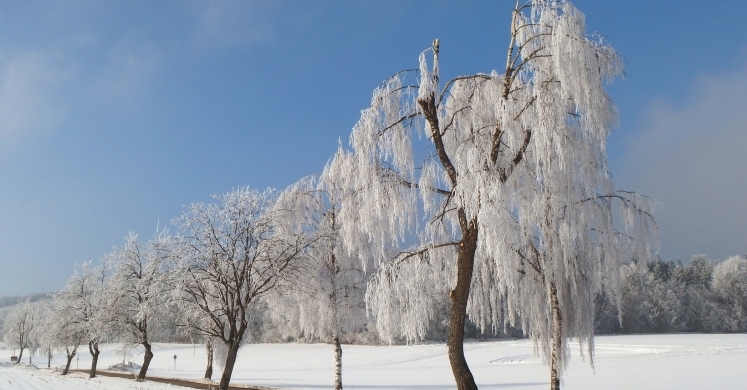Blog

#bioPGH Blog: Trees in the Winter
 A resource of Biophilia: Pittsburgh, #bioPGH is a weekly blog and social media series that aims to encourage both children and adults to reconnect with nature and enjoy what each of our distinctive seasons has to offer. From the best times to plant seasonal flora and enjoy their peak blooms, to astronomical events and creatures to keep an eye and ear out for, Phipps will keep you in the know with what’s going on in our environment!
A resource of Biophilia: Pittsburgh, #bioPGH is a weekly blog and social media series that aims to encourage both children and adults to reconnect with nature and enjoy what each of our distinctive seasons has to offer. From the best times to plant seasonal flora and enjoy their peak blooms, to astronomical events and creatures to keep an eye and ear out for, Phipps will keep you in the know with what’s going on in our environment!
Now that December is here, it’s easy to get caught up in the sparkly, snowy whirl of the holidays! But as we bundle up and sing “Let it snow, let it snow, let it snow,” have you ever wondered how local trees survive the winter? What are some adaptations that trees need to get through the same freezing temperatures that drive us to parkas and hot chocolate? Let’s take a look!
A deciduous tree’s most noticeable preparation for winter is the dramatic color change and drop of leaves in autumn (the term "deciduous" refers to any tree that seasonally drops its leaves). Leaves, which produce food for the tree during warm months, become too energetically costly in the winter. The potential for water loss and leaf tissue damage during the frozen months overwhelms any benefit for the tree; thus, the leaves fall.
Other major preparations for winter involve the individual cells inside the tree itself. A tree’s main goal in the winter is to prevent living cells from freezing. Thus, the tree’s cells alter the composition of their cell membrane lipids (fats) enough to allow greater water transport out of the cell. Also, tree cells break down their starch reserves into sugars. With much of the original water transported out of this cell, this combination creates a sugary “antifreeze” solution inside the cells to protect them from freezing.
Deciduous trees have some excellent adaptations for winter, but the true cold weather champions are coniferous trees. In addition to adaptations to handle water around their cells in freezing temperatures, conifers have needles instead of broad leaves. Needles minimize the weight of snow and ice that can accumulate on the branches, and the thick, waxy outer layer, the “cuticle,” helps protect the cells inside. In addition, the wood of most conifers is fairly flexible, and can handle harsh winter winds. These adaptations allow evergreens to survive the bitterly cold winters of taigas or boreal forests. In these extreme climates, where yearly averages are only 50 to -40 degrees Fahrenheit, conifers reign as master trees of the cold.
Connecting to Outdoors Tip: Family experiment! Once the weather drops to freezing at night, would you like to test how well a tree’s sugary “antifreeze” protect the tree’s cells? Take two balloons (these will be your two “cells”) and add 2.5 tablespoons of table sugar to one of the balloons. Now add half cup of water to each of the balloons. Once you’ve tied off the balloons, be sure shake up the sugar-water balloon to mix well. Now, leave both balloons outside overnight. Did either freeze or turn to slush? What was the temperature that night? Do you think salt or sugar is better at preventing ice formation? What happens when you eat too much salty food? Does it make you thirsty? Why might a plant not want to use salt as anti-freeze?
Continue the Conversation: Share your nature discoveries with our community by posting to Twitter and Instagram with hashtag #bioPGH, and R.S.V.P. to attend our next Biophilia: Pittsburgh meeting.
Resources
Michigan State University: How Do Trees Survive in the Winter
Penn State University Extension: Cold Hardiness of Fruit Trees
Northern Woodlands: How Do Trees Survive Winter Cold?
SciTable: Plant Cells
WWF: Coniferous Forests
NASA, Earth Observatory: Coniferous Forest
Select Photos © Vaido Otsar CC-BY-SA-3.0 and Kreuzschnabel CC-BY-SA-3.0

